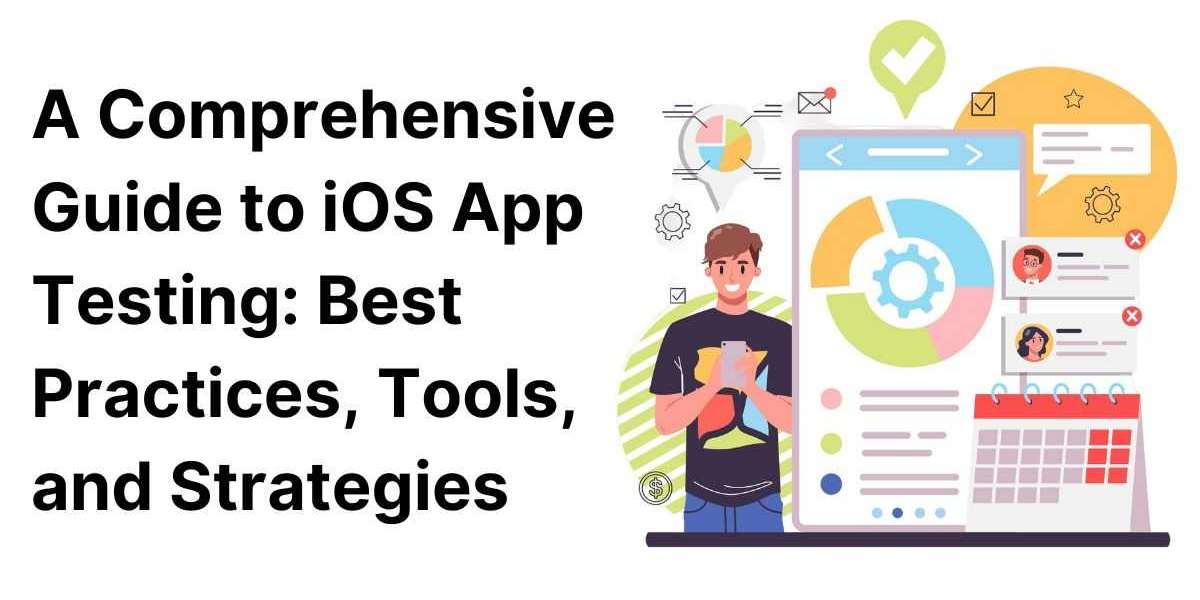Developing an iOS app is just one part of the journey. Ensuring that the app works seamlessly, offers a positive user experience, and meets Apple’s strict guidelines is where iOS app testing comes into play. In this blog post, we’ll dive deep into the essentials of iOS app testing, covering best practices, popular tools, and strategies to help you release a high-quality app.
Why is iOS App Testing Important?
iOS app testing is crucial because it ensures that your app functions properly across various Apple devices and OS versions. The process identifies bugs, performance issues, and UX problems that could negatively impact user satisfaction and lead to poor reviews.
Here are several important reasons to prioritize comprehensive testing:
- Device Compatibility: Apple offers a range of devices with different screen sizes, resolutions, and hardware configurations.
- iOS Updates: Regular iOS updates introduce new features and can also cause compatibility issues.
- User Expectations: Apple users expect smooth, fast, and bug-free experiences.
- App Store Guidelines: Apps must comply with Apple’s guidelines to be approved for the App Store.
Types of iOS App Testing
When testing an iOS app, it’s essential to cover different types of testing to catch all potential issues:
- Functional Testing: Ensures that the app’s features work as intended. This includes testing the core functionality, user interactions, and integrations with other apps or services.
- Performance Testing: Analyzes the app’s speed, responsiveness, and resource consumption under various conditions.
- User Interface (UI) Testing: Checks the app’s layout, visual elements, and overall appearance on different devices.
- Usability Testing: Evaluates how easy and intuitive the app is for users.
- Compatibility Testing: Tests the app across multiple iOS versions and devices to ensure consistent performance.
- Security Testing: Ensures the app is secure, protecting user data and preventing unauthorized access.
- Automated Testing: Involves writing scripts that automatically run tests for various scenarios, saving time on repetitive tasks.
Best Practices for iOS App Testing
- Test Early and Often: Start testing during the development phase and continue throughout the project to catch issues early.
- Real Devices Over Simulators: Though simulators are useful, testing on actual devices offers a more precise understanding of how your app functions in everyday scenarios.
- Automate Where Possible: Use automated testing tools for repetitive tasks and regression testing to speed up the process.
- Monitor Memory Usage: iOS devices have limited resources, so it’s vital to ensure your app doesn’t consume too much memory.
- Follow Apple’s Guidelines: Familiarize yourself with Apple’s App Store guidelines to avoid rejections during the submission process.
Top Tools for iOS App Testing
- XCTest and XCUITest: Native testing frameworks provided by Apple. XCTest is used for unit testing, while XCUITest is suitable for UI testing.
- Appium: A popular open-source tool for cross-platform mobile app testing, supporting both iOS and Android.
- TestFlight: An Apple tool that allows you to beta test your app with real users before its official release.
- Calabash: An open-source tool that supports both iOS and Android, useful for automated acceptance testing.
- Firebase Test Lab: Google’s cloud-based solution that allows you to test your app on multiple devices and configurations.
Strategies for Effective iOS App Testing
- Adopt a Test-Driven Development (TDD) Approach: Write your tests before writing the actual code. This helps ensure your code meets the required specifications from the beginning.
- Use Continuous Integration (CI): Implement CI pipelines to automatically run tests whenever new code is added, ensuring consistent quality.
- Perform Regression Testing: Regularly check that new features or updates don’t break existing functionality.
- Gather Real User Feedback: Use beta testing tools like TestFlight to gather feedback from real users and make necessary improvements before launching.
Conclusion
iOS app testing is a critical step in ensuring your app’s success in the competitive App Store market. By incorporating a mix of manual and automated tests, using the right tools, and following best practices, you can deliver an app that delights users and meets Apple’s high standards.Please log in again to continue using the app.
See more service:
https://aqusag.com/android-app-testing
https://aqusag.com/api-testing







